Related Research Articles
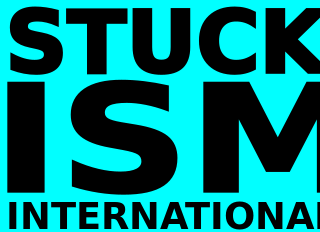
Stuckism is an international art movement founded in 1999 by Billy Childish and Charles Thomson to promote figurative painting as opposed to conceptual art. By May 2017, the initial group of 13 British artists had expanded to 236 groups in 52 countries.

Remodernism is an artistic and philosophical movement aimed at reviving aspects of modernism, particularly in its early form, in a manner that both follows after and contrasts against postmodernism. The movement was initiated in 2000 by stuckists Billy Childish and Charles Thomson, with a manifesto, Remodernism in an attempt to introduce a period of new "spirituality" into art, culture and society to replace postmodernism, which they said was cynical and spiritually bankrupt. In 2002, a remodernism art show in Albuquerque was accompanied by an essay from University of California, Berkeley art professor, Kevin Radley, who said there was a renewal of artists working without the limitation of irony and cynicism, and that there was a renewal of the sense of beauty. Adherents of remodernism advocate it as a forward and radical, not reactionary, impetus.

The Turner Prize, named after the English painter J. M. W. Turner, is an annual prize presented to a British visual artist. Between 1991 and 2016, only artists under the age of 50 were eligible. The prize is awarded at Tate Britain every other year, with various venues outside of London being used in alternate years. Since its beginnings in 1984 it has become the UK's most publicised art award. The award represents all media.

The Young British Artists, or YBAs—also referred to as Brit artists and Britart—is a loose group of visual artists who first began to exhibit together in London in 1988. Many of the YBA artists graduated from the BA Fine Art course at Goldsmiths, in the late 1980s, whereas some from the group had trained at Royal College of Art.

The Hon. Sir Nicholas Andrew Serota is a British art historian and curator.

Charles Thomson is an English artist, poet and photographer. In the early 1980s he was a member of The Medway Poets. In 1999 he named and co-founded the Stuckists art movement with Billy Childish. He has curated Stuckist shows, organised demonstrations against the Turner Prize, run an art gallery, stood for parliament and reported Charles Saatchi to the OFT. He is frequently quoted in the media as an opponent of conceptual art. He was briefly married to artist Stella Vine.

Joe Machine is an English artist, poet and writer. He is a founding member of the Stuckists art group.

The Stuckists Punk Victorian was the first national gallery exhibition of Stuckist art. It was held at the Walker Art Gallery and Lady Lever Art Gallery in Liverpool from 18 September 2004 to 20 February 2005 and was part of the 2004 Liverpool Biennial.
David Lee is an outspoken English contemporary art critic—condemning conceptual art in general and the Turner Prize in particular. He publishes and edits The Jackdaw magazine, critical of the contemporary art world.

John Bourne is a British artist and painter, living and working in Wales, and a member of the Stuckists art movement. He founded the Wrexham Stuckists group in 2001 and has been exhibited in the group's shows since then, including The Stuckists Punk Victorian. He has also taken part in Stuckist demonstrations against the Turner Prize. The subject matter for his paintings, which are done in a simplified style, comes from his memories.
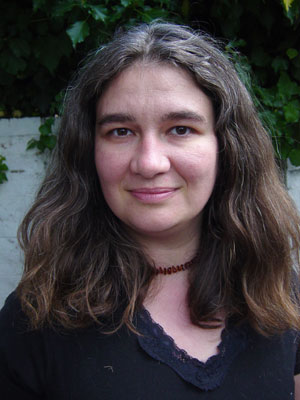
Elsa Dax is a French painter and a member of the Stuckists art movement. Major themes in her work are myth, legend and fairytale.
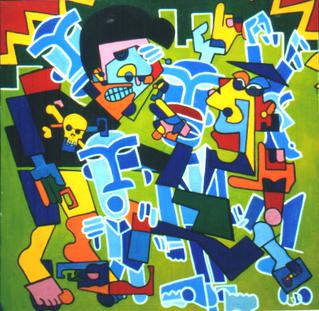
Stuckism is an art movement that began in London, England, in 1999. In 2000, Melbourne artist Regan Tamanui started the first international branch of the movement. As of 2010, there are seven Australian Stuckist groups, who have held shows—sometimes concurrently with UK activities—received coverage in the Australian press and on TV, and also been represented in UK shows. The Stuckists take a strong pro-painting and anti-conceptual art stance, and were co-founded by Charles Thomson and Billy Childish.
Adrian Searle is an art critic for The Guardian, and has been writing for the paper since 1996. Previously he was a painter.

Stuckist demonstrations since 2000 have been a key part of the Stuckist art group's activities and have succeeded in giving them a high-profile both in Britain and abroad. Their primary agenda is the promotion of figurative painting and opposition to conceptual art.
Sarah Kent is a British art critic, formerly art editor of the weekly London "what's on" guide Time Out. She was an early supporter of the Young British Artists in general, and Tracey Emin in particular, helping Emin to get exposure. This has led to polarised reactions of praise and opposition for Kent. She adopts a feminist stance and has stated her position to be that of "a spokesperson, especially for women artists, in a country that is essentially hostile to contemporary art."

Regan Tamanui is an artist based in Melbourne, Australia. In October 2000, he founded the Melbourne Stuckists, the fourth Stuckist of the original Stuckist groups and the first outside the United Kingdom. He has also painted prolifically as a street artist under the tag name HA-HA.
Richard Cork is a British art historian, editor, critic, broadcaster and exhibition curator. He has been an art critic for the Evening Standard, The Listener, The Times and the New Statesman. Cork was also editor for Studio International. He is a past Turner Prize judge.
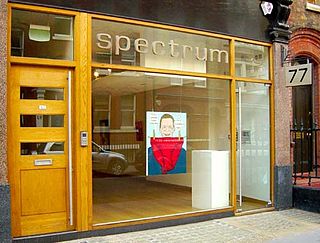
Go West is the title of the first exhibition by Stuckist artists in a commercial London West End gallery. It was staged in Spectrum London gallery in October 2006. The show attracted media interest for its location, for the use of a painting satirising Sir Nicholas Serota, Director of the Tate gallery, and for two paintings of a stripper by Charles Thomson based on his former wife, artist Stella Vine.
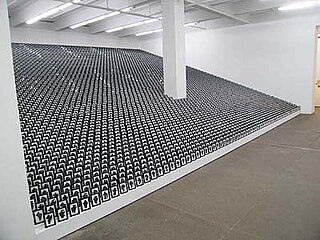
Neo-conceptual art describes art practices in the 1980s and particularly 1990s to date that derive from the conceptual art movement of the 1960s and 1970s. These subsequent initiatives have included the Moscow Conceptualists, United States neo-conceptualists such as Sherrie Levine and the Young British Artists, notably Damien Hirst and Tracey Emin in the United Kingdom.

Sir Nicholas Serota Makes an Acquisitions Decision is one of the paintings that was made as a part of the Stuckism art movement, and is recognized as a "signature piece" for the movement. It was painted in 2000 by the Stuckism co-founder Charles Thomson, and has been exhibited in a number of shows since, as well as being featured on placards during Stuckist demonstrations against the Turner Prize.
References
- ↑ "Sir Antony Buck", The Guardian, 11 October 2003 Retrieved 21 March 2006
- ↑ "Long Serving Essex MP Remembered", East Anglia Daily Times, 3 April 2004. Retrieved 21 March 2006
- ↑ "Celebrities' open letter to Scotland – full text and list of signatories | Politics". theguardian.com. 7 August 2014. Retrieved 26 August 2014.
- ↑ Stuckism Press Cuttings Retrieved 21 March 2006
- ↑ Evening Standard ES Magazine, p.15, 2 June 2000
- ↑ "One Man and His Boat Shed Sail into a Storm over the Turner", The Times, 6 December 2005. Retrieved 27 March 2006
- ↑ "Melly's bequest to his lovers", Daily Record 22 October 2007